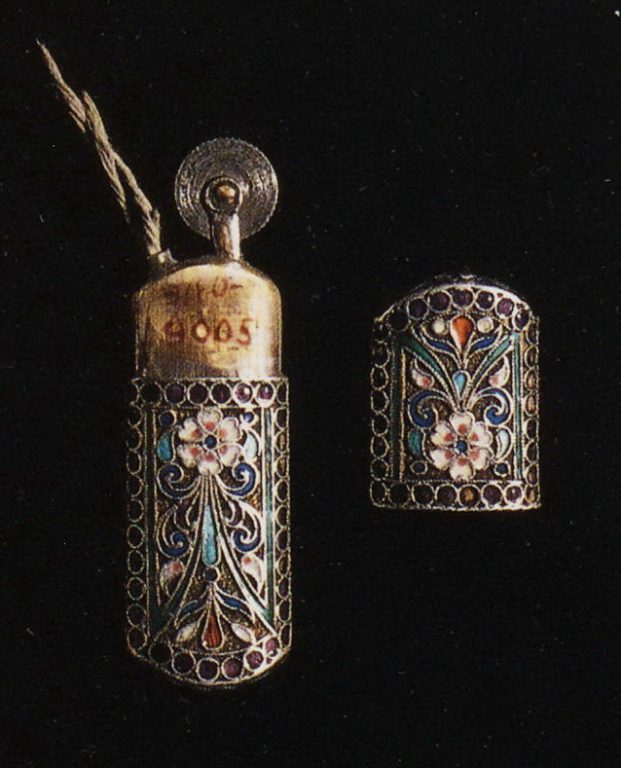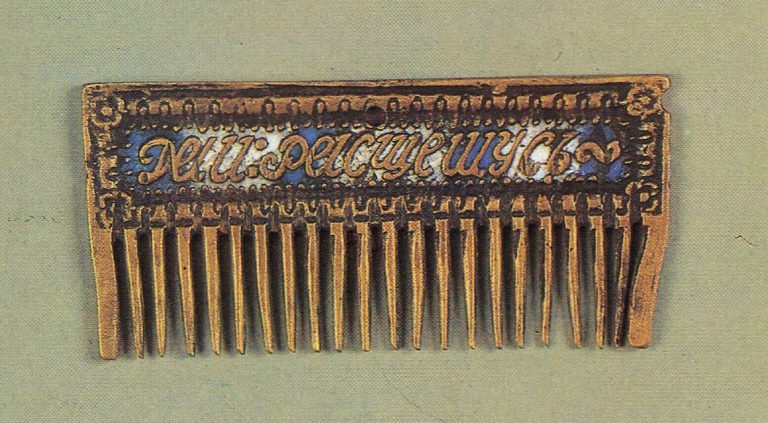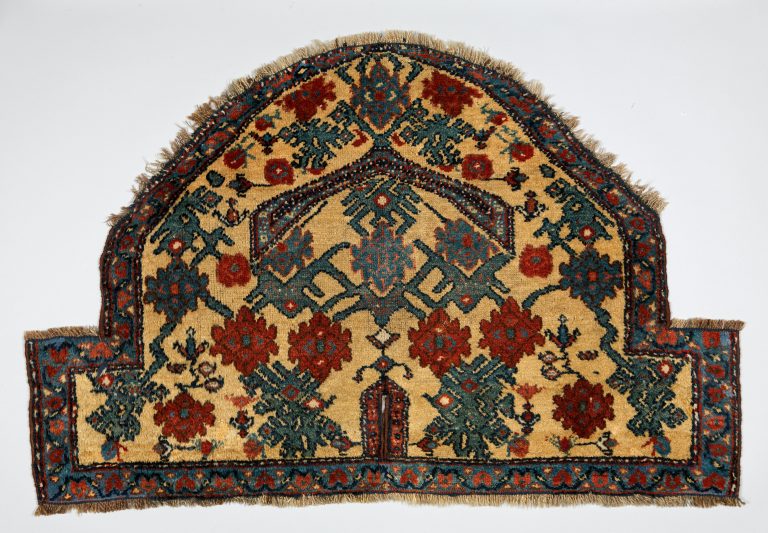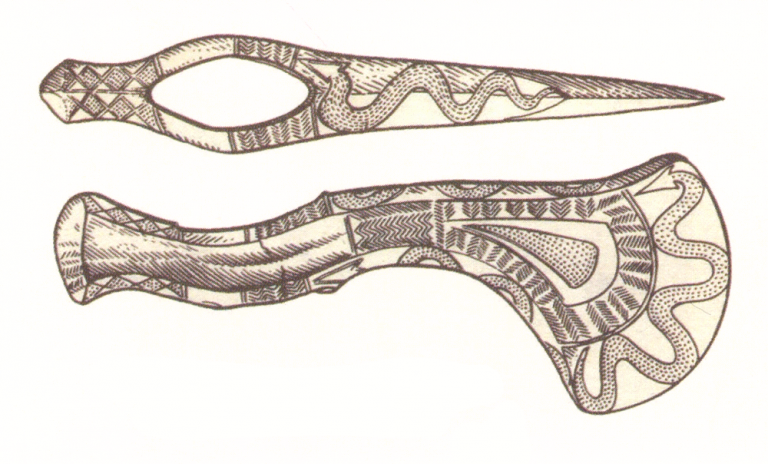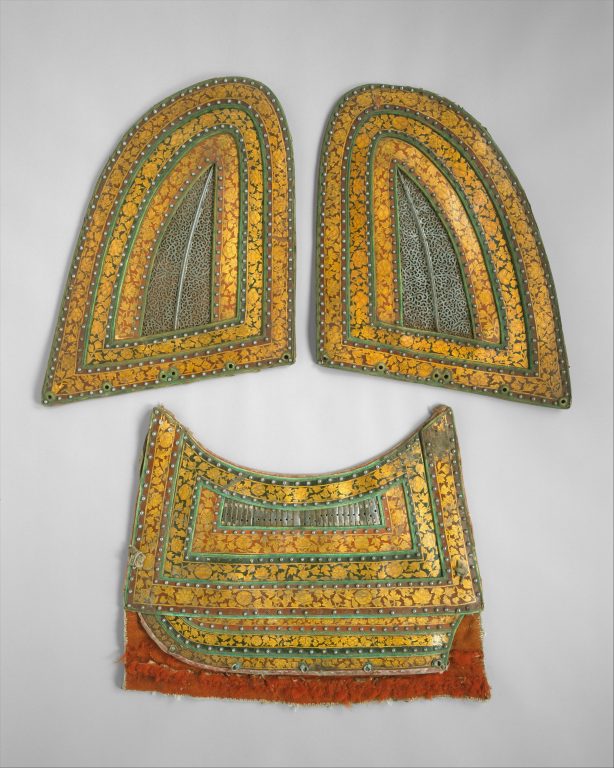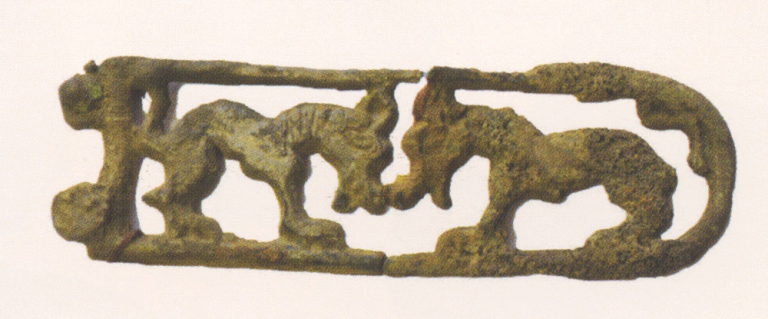

-
Objecthorse equipment or accessory: Stirrups
-
Type of arts & crafts
-
Mediumcopper alloy, leather, vegetal thread
-
Size38.123.1; H. 5 1/2 in. (14 cm); W. 4 3/4 in. (12.1 cm); D. 8 3/4 in. (22.2 cm); Wt. 3 lb. 2.8 oz. (1440.2 g); 38.123.2; H. 5 3/4 in. (14.6 cm); W. 4 3/4 in. (12.1 cm); D. 8 3/4 in. (22.2 cm); Wt. 3 lb. 5.1 oz. (1505.4 g)
-
Geography detailsCountry of Origin
South America -
Country today
-
Date19th century
-
CulturePeruvian
-
Type of sourceDatabase “Metropolitan Museum of Art”
-
Fund that the source refers toMetropolitan Museum of Art
-
These slipper stirrups, cast in bronze, mimic in metal the shape of a leather boot. They are decorated with vegetal scrolls inspired by European Baroque and neo-classical designs, probably imitating contemporary embroidery. A leather lining is sewn on the edges by means of small holes pierced in the metal. The high quality of the metal casting is a direct inheritance of the metalworking skills displayed by Peruvian native populations before the conquest.
Introduced to South America by the Spaniards in the 16th century, horses soon became an important element in the lives of many local populations, of both colonial and native origin. As a horse would be highly valued by its owner, the latter would likely cover it with beautiful and elaborated tack, especially during festivals or other celebrations. Closed stirrups, or regular stirrups covered with a leather hood called a tapadero, are still regularly used in South America, as they protect the rider’s feet when riding in the bushes.




